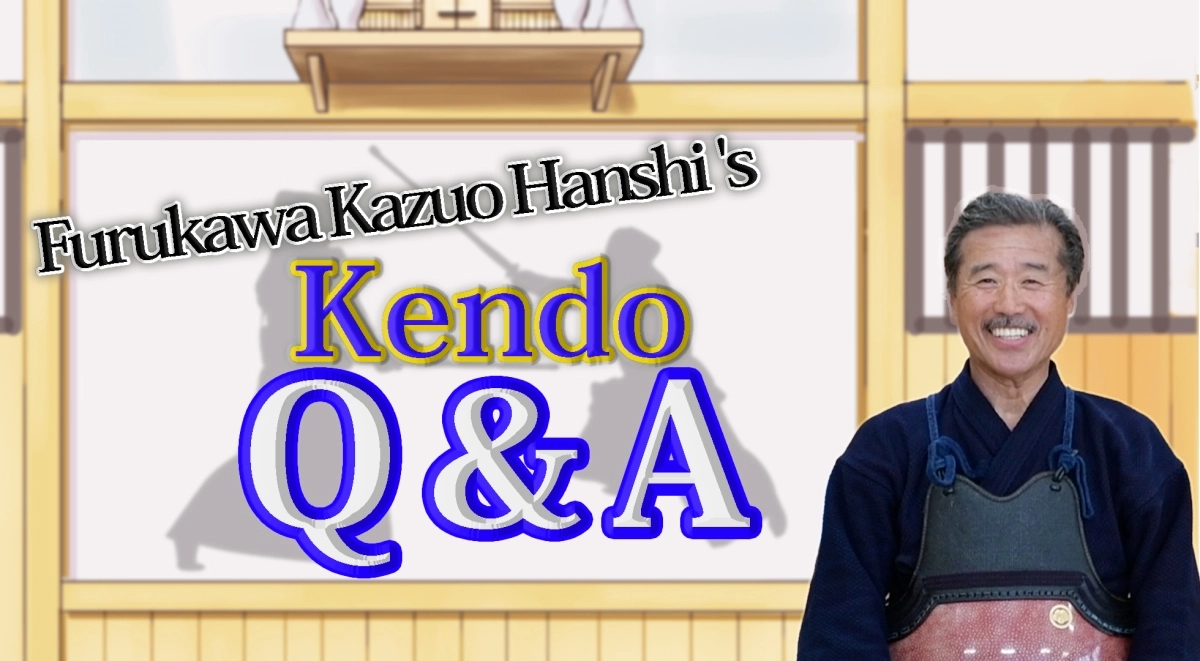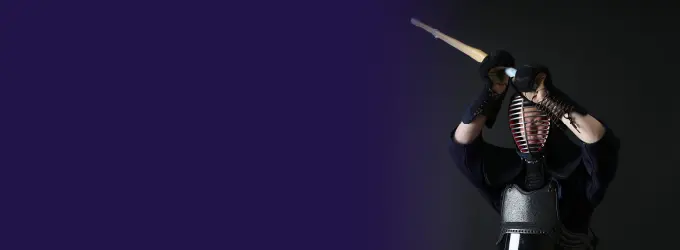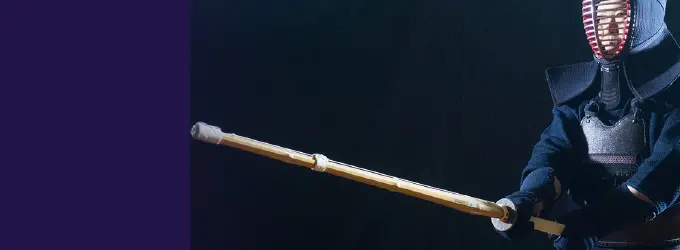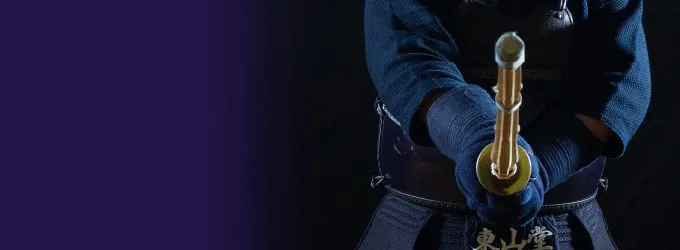Furukawa Kazuo's Kendo Q&A
10 12, 2022

Have a kendo related question or problem you are having? How about asking Hanchi 8th Dan, Furukawa Kazuo?
From personal kendo questions to questions about teaching others, anything kendo related is OK!
Competitors to instructors, Furukawa Hanshi will use his expertise to answer your questions!
Just write your question on the form below!
https://form.jotform.com/221462253088959
Table of Contents
1.Question No.7
Question:
Venerable Hanshi, what advice can you give to older Kendo students who began training later in life? I am 54, have arthritis in my knee, but still wish to be the best I can be in my practice of Kendo. Respectfully, Tommy.
Furukawa Hanshi's Answer:
Hello!
We are glad that you have started kendo! Kendo is a life-long activity that can be practiced forever, even as you get older, so please enjoy it and take it easy. I believe that the basics are important in any sport, and kendo is no different. I have always practiced suburi, correct kiri-kaeshi, and basic strikes diligently in kendo while keeping in mind the importance of correct etiquette and manners. My personal goal is to see how long I can continue to do a men-uchi from the ichisoku-itto distance in a single movement. I also check in the mirror to make sure that I am dressed properly, and that my kamae and posture are correct. When giving instruction, I explain what I am teaching and also show it through example. Sometimes I even take video with my phone to check. I have a recurring pain in my lower back and cervical spine but do so taking care to avoid injury. I usually do stretches for flexibility, walking, and sit-ups. I also play golf as a hobby. I am getting a little old and I want to enjoy my life. I would like to continue to enjoy kendo and golf while taking care of my health. Tommy, I hope you enjoy kendo while also taking it easy.
Keep up the good work!
2.Question No.6
Question:
Concretely speaking, what type of movement is made when taking up a kamae and performing seme that is both attacking and defending?
Furukawa Hanshi's Answer:
“A both attacking and defending kamae”
This is a very difficult question!
For us, those who truly love kendo, a kamae that unifies attack and defense is a lifelong endeavor. For myself, even in my daily life, I am conscious of my posture and try to have good posture as I walk. Moreover, I always make sure to maintain my appearance, my manners, and practice good reiho when in the dojo or during kendo keiko. I am particularly aware of practicing good reiho against my opponent. With the opponent, we perform rei, take three steps forward, and perform sonkyo while drawing the shinai and already applying seme. Afterwards, we perform osame-to, take five steps back, and perform rei with our chest out wide. Keiko should focus on the fundamental techniques. Foremostly being able to strike men in a single rhythmic movement from the issoku-itto maai, without drawing the left foot forward first. Once this has been accomplished, move on to Oji waza. By then asking for lots of keiko with a skilled sensei will help develop a good kamae and mental state. A good kamae can be obtained by repeatedly checking your kamae, posture, and reiho manners in a mirror. Please do your best.
3.Question No.5
Question:
Please teach me about the “seme of kendo.”
Even if I attempt to take the center line and apply seme, this does not seem to affect my opponent at all. How do I perform seem so that it will be conveyed to the opponent?
Furukawa Hanshi's Answer:
This is a lifelong theme for all of us!
Although when against an opponent who is of a lower level than myself, I am able to use seme to break them quite easily, I have had many experiences, against other sensei, very strong sensei, when it would seem that my seme did not work at all when moving against them.
For myself, I thoroughly integrated striking men from the issoku-itto maai without first stepping forward with tsugi ashi and making the strike with a single rhythmic movement.
Basic waza, Oyo waza, uchikomi, kakari-geiko, kiri-kaeshi. I did these things in keiko twice as much as others did. I remember that my seme also became felt by the opponent due to asking very good sensei for keiko many, many times. (I think that asking for keiko with skilled sensei is the fastest way.) Also, be conscious of reiho, manners, and your appearance during keiko. Making the basics a part of your keiko and taking them seriously is number one, I think. Please do your best!
4.Question No.4
Question:
When it comes to the 8th dan examination, what issues if not done would not allow someone to be passed? Also, what things would not allow someone to be passed if they were done? If you could tell me about kamae, hassei, breathing, ashi-sabaki, even from striking to zanshin, anything, no matter how minute, would be very much appreciated.
Furukawa Hanshi's Answer:
About the 8th Dan Examination
I think working diligently on one’s appearance, reiho, and manners regularly is important. There are many sensei who believe that they are doing this well but are not. I start by performing rei by bowing to the opponent, taking three steps forward, and have the feeling of applying seme from my shoulders as I draw out the shinai and lower into sonkyo. Afterwards, from sonkyo I rise, take five steps back, and with my chest stuck out perform rei by bowing. Three years before taking the examination I would practice this every day in keiko until I naturally had excellent posture. I would also take notice of my own posture while walking to work to make sure my chest was out as I walked. As a result, I think that my posture during keiko changed as well. I focused thoroughly in keiko on striking from the issoku-itto maai, making the strike in a single rhythmic movement. Once I was able to accomplish this, I practiced keeping momentum after the strike and maintaining my posture as I went passed by the opponent. By doing this I was became able to create tame and apply waza. I still make this a part of my regular keiko today.
5.Question No.3
Question:
Hello, my name is OM.
I am currently 30 years old and 4th dan.
I recently made my 4th attempt for 4th dan, but again, failed.
Because there are many areas that need improvement, I do understand the outcome. This question is regarding the fact that the improvements I think I need to make may differ from the improvements the Sensei are looking for.
I was conscious of taking a step forward and creating tame in order to strike. As I would take that step forward, both individuals I was paired with would attempt to strike, making me feel that I was better able to draw the opponent into striking.
However, things like tame, timing, strike power, and speed where among the things I believe were lacking. Yet the judging sensei’s appraisal was that my attacking and defending while performing and receiving seme had not been accomplished and that the opportunities in which I struck where not right.
Perhaps it appeared to them that, as I took a step forward causing the opponent to strike, the opponent was performing a debana and I was simply too slow to react? Among other issues, this has left me not knowing how to correct these issues.
I apologize for the length of this question, but what would you consider the cause of this issue?
It is very much appreciated. Thank you very much.
Furukawa Hanshi's Answer:
“I was conscious of taking a step forward and creating tame in order to strike.”
For myself, as I often look to use debana-waza, I usually do not take a step forward from the Issoku-itto maai to strike.
I will use my spirit to apply seme keeping my left foot in place and moving my right foot forward to invite a strike. Creating “tame,” when the opponent strikes, I will aim to use debana-men or kaeshi-do. I believe your intention is the same. If you are able to achieve an ippon strike or not will come down to fervently performing the basics in regular keiko. Even for us 8th dan, we have daily keiko in order for us to perform our waza naturally.
When you are told that the timing to strike was wrong, although you may feel that you are creating tame in order to strike the opponent, in reality it appears that you are attempting to strike arbitrarily. I believe it will be helpful for you to practice waiting until both you and the opponent have the intention to strike and at the moment the opponent initiates, strike in a single fluid movement.
In daily practice, striking from the issoku-itto maai without stepping forward while striking from the hips in a single, fluid movement is the most important thing along with reiho. Rei – three steps forward – sonkyo – finish – sonkyo five steps back – rei in the same manner as in the kendo kata is right, I think.
6.Question No.2
Question:
As I am unable to strike from the issoku-itto distance, I find myself struggling to move in with seme and attack. I have recently been attempting to use seme on the opponent’s fist and moving forward with okuri-ashi to strike. Although it does not always go well, I have found that this is the only manner in which to apply pressure. Is it right to spend time to improve this technique? I am currently 74 years old, thin, with little power left in my legs. I am currently attempting the 8th dan. Any advice that you could offer would be greatly appreciated. Thank you very much.
Furukawa Hanshi's Answer:
It is fundamentally important to strike with a single movement from the issoku-itto maai to achieve power and sae in a strike. However, as you grow older, your own issoku-itto maai will become closer to the opponent. When I instruct, I adjust this maai distance to be suitable to the age of that person. The method of applying seme, taking the upper hand, and striking is also important. I would recommend that you practice both striking from a close maai- striking with a single movement- as well as using seme to overcome the opponent with okuri-ashi to strike. Degashira waza, you make the strike with a single movement. With Shikakewaza you use okuri-ashi to perform seme to strike. Please find the most suitable maai distance from which you can strike. Please do your best.
7.Question No.1
Question:
After entering highschool, the option to take up the Jodan kamae becomes available
with both left and right kote becoming valid striking targets.
During shiai, while two individuals begin from the Chudan kamae, frequently
we will see high school students hold the shinai above their head one
handed, guarding both the men and right hand while using their left hand to guard the do.
If one were to strike the right kote of the individual in this position with proper hasuji,
good hassei, and maintaining zanshin, would that be considered a valid ippon?
Thank you very much-
Furukawa Hanshi's Answer:
(Concerning the validity of a right kote strike)
The current shinpan rules state that moving in on an opponent from the "Mitokoro-kakushi" position or
other heavily defended stance will be considered
a hansoku and we are activly teaching shinpan to call these hansoku when they occur.
While I believe it would be difficult to take a valid ippon while the opponent is in this position,
if the right kote is struck the moment they attempt to release
it from the shinai, I believe this could be considered a valid ippon strike.
In the past, during a high school shiai, a student in the jodan position held the shinai
with his left hand and covered his do with the right. Miraculously, a strike on the right hand
was made and was awarded an ippon.
I have only seen this once.
A similar situation occured at the World Kendo Championships,
however no ippon was awarded for that strike.
Do-uchi-
A tobi-komi do made moving to the right of the opponent is a valid ippon.
A kaeshi-do is also valid so long as the required conditions are met.
(Tenouchi, Sae, Firmness, Posture, Footwork are all important)8.Question No.8
Question:
Venerable Hanshi, what advice can you give to older Kendo students who began training later in life? I am 54, have arthritis in my knee, but still wish to be the best I can be in my practice of Kendo. Respectfully, Tommy.
Furukawa Hanshi's Answer:
Hello!
We are glad that you have started kendo! Kendo is a life-long activity that can be practiced forever, even as you get older, so please enjoy it and take it easy. I believe that the basics are important in any sport, and kendo is no different. I have always practiced suburi, correct kiri-kaeshi, and basic strikes diligently in kendo while keeping in mind the importance of correct etiquette and manners. My personal goal is to see how long I can continue to do a men-uchi from the ichisoku-itto distance in a single movement. I also check in the mirror to make sure that I am dressed properly, and that my kamae and posture are correct. When giving instruction, I explain what I am teaching and also show it through example. Sometimes I even take video with my phone to check. I have a recurring pain in my lower back and cervical spine but do so taking care to avoid injury. I usually do stretches for flexibility, walking, and sit-ups. I also play golf as a hobby. I am getting a little old and I want to enjoy my life. I would like to continue to enjoy kendo and golf while taking care of my health. Tommy, I hope you enjoy kendo while also taking it easy.
Keep up the good work!
Kazuo Furukawa.






